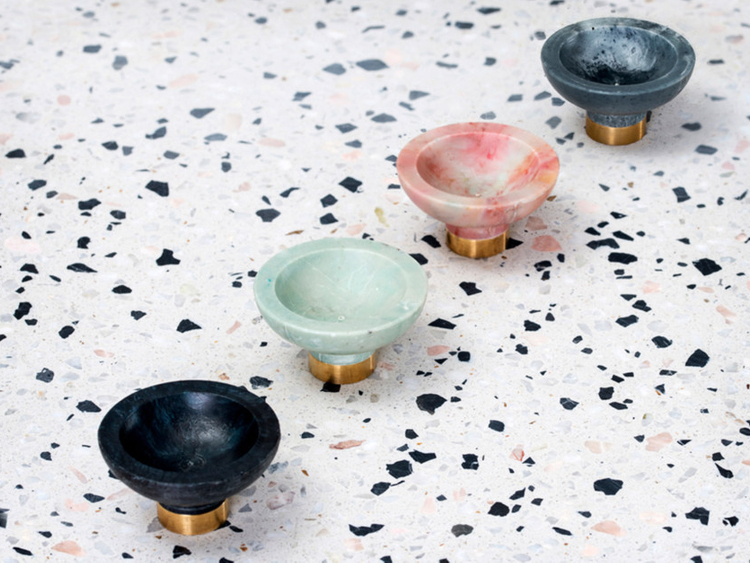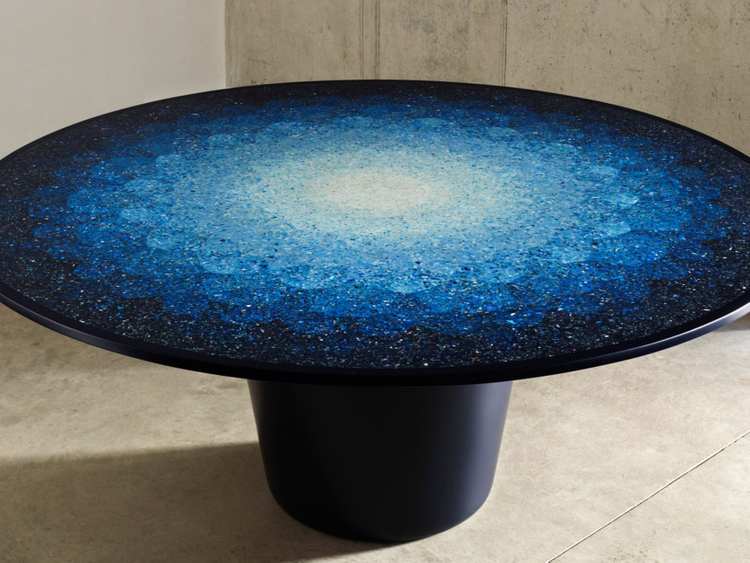Discarded bottles, fishing nets bobbing up and down on the sea surface or majestic sea creatures tangled in plastic webs — these are not new occurrences and the state the of sea didn’t turn overnight, but it has taken a mix of social media advocacy, mainstream media focus, and maybe, just maybe, denials of climate change from some of the highest offices on the planet, that we are finally waking up to the mess we have created.
It will take monumental re-programming efforts — at the level of institutions, policy and end user — to ensure no new plastic is added to our ecosystems, but what do we do right now?
I would say, first, decline the offer of plastic straws at restaurants — use pasta straws if you absolutely must, and second, support designers who are taking the plastic out of the ocean and repurposing the non-recyclable waste into exciting new products.
In 2015, London based Studio Swine introduced their five-piece collection made from plastics removed from the sea. The pieces inspired by maritime traditions also alluded to the specificity of the situation where they were trawled from. Since then, designers have continually explored to creatively address plastic pollution. In recent years, they have presented accessible, daily use products that further the conversation.
Andrew Simpson
The designer behind the Sydney-based industrial-design studio Vert Design acted to help preserve Australia’s rich diversity of marine life by creating beautiful ocean plastic knobs. Using plastic collected by ocean conservation organisation Sea Shepherd Australia, who run a Marine Debris collection programme which is working to clean up the Australian coastline, the knobs were created by breaking down the waste plastic into pellets, which are then heated and poured into moulds. These knobs are made to order — each one is unique and the colours can be customised.
Brodie Neill
The London based Australian designer combed beaches around the world, including Tasmania, Hawaii and Cornwall to create this stunning terrazzo effect table. Working with an international community of environmentalists to collect the plastic pieces from their local seashores, the designer then shredded them into small fragments, or chips, before separating them via colour and sterilising them for use.
Evoking the spirit of the ocean resin-mixed black, blue, white and green chips were strategically located on the table top to create a speckled gradient effect that went from a light centre to dark edges. The Gyro table is made of plastic chips but reminisces the terrazzo techniques usually associated with marbles and granites.
Stella McCartney
Long having turned her back on fur, leather and unethical silks, fashion’s mighty eco-warrior has now turned her sight and access to innovation in material research to save our oceans. A sense of responsibility in how she conducts her business runs deep, and in this case we can all agree, given her decades of activism through the clothes she makes — without compromise on style, quality or profits — this is not a marketing gimmick or publicity stunt.
In McCartney’s new flagship store on London’s Old Bond Street, fully bio-degradable mannequins are decked in her latest collection that includes a backpack made recycled nylon made from industrial plastic, waste fabric and fishing nets. After teaming up with Adidas last year, the designer furthered her partnership with the non-profit organisation Parley For The Oceans to develop her own range of products that use ocean plastics. The benches at her flagship store for example; they are composed of foam and recycled plastic.










